| Positioning | |
Meeting the demands of real-time positioning
|
SWEPOS™ is a network of GPS/GLONASS reference stations which began as a co-operation between the National Land Survey of Sweden and Onsala Space Observatory. The early design phases of SWEPOS were made in 1992. It was already then stated that the network should be of both scientific and practical benefit to the professional GNSS users and the public. The purposes of SWEPOS are mainly to [1]: • Provide GNSS raw data to post-processing users • Provide GNSS corrections to real-time users • Act as high-precision control points for GNSS users • Provide data for scientific studies (e.g. crustal motion) • Monitor the integrity of the GNSS systems • Act as the basis for the Swedish national reference frame, SWEREF 99 Figure 1: The SWEPOS network with 161 permanent reference stations for GNSS. The red dots in northern Sweden are planned SWEPOS stations. During early stages of development, SWEPOS consisted of 21 stations covering the whole of Sweden with an average in-between distance of 200 km. During this period a group of governmental agencies contributed to the financing of SWEPOS. Since 1999, SWEPOS has developed to meet the demands on real-time positioning with centimetre accuracy, mainly through co-operative efforts by the National Land Survey, Onsala Space Observatory and the SWEPOS users. Today both the development and operation of SWEPOS are the responsibilities of the National Land Survey. Design of the SWEPOS networkAll 161 SWEPOS stations are equipped with dual-frequency GPS/GLONASS receivers and choke-ring antennas of Dorne Margolin design. The GNSS antennas are mounted under clear acrylic radomes. Data is collected every second, using a 5 degree elevation mask. The stations are connected to a control centre located at the head quarters of the National Land Survey (in Gävle, Sweden) via leased TCP/IP connections, which are monitored at all times. The original 21 SWEPOS stations, which are all still in use today, are mounted with concrete pillars directly on bedrock. These belong to so called SWEPOS Class A stations (blue squares in figure 1), along with 9 newer stations with similar monuments in terms of stability. All equipment, apart from the antenna, is redundant and located in specially designed cabins (figure 2). The remaining 131 stations have mainly been equipped in a simplified way, with antennas mounted on rooftops (figure 3) and with less redundancy. These stations belong to SWEPOS Class B stations (blue dots in figure 1), which were established primarily for the use of network RTK. A complete network computation of all SWEPOS stations is done on a daily basis with the Bernese GPS Software, in order to monitor the stability of the Class B stations. A broad spectrum of Swedish organizations uses GNSS data from the SWEPOS network to increase productivity and efficiency in their respective fields, covering both scientific and production work. Examples of scientific applications include studies of crustal motion and estimations of the water vapour content inthe atmosphere. The SWEPOS positioning services, however, are mainly targeted at production applications (e.g. see figure 4). SWEPOS and EUREF/IGSThe National Land Survey and Onsala Space Observatory have been active in international GNSS projects for many years. The European countries have collaborated in building up a network of permanent GNSS stations as well as in computing national realisations of the adopted European three dimensional reference system ETRS 89. This work is done under the IAG Sub commission for Europe (EUREF). EUREF is also engaged in the establishment of a common vertical reference system based on the national levelling networks and the European GPS campaign EUVN. The realisation of ETRS 89 in Sweden is called SWEREF 99 and is defined by the original 21 SWEPOS Class A stations [2].The SWEPOS stations Visby, Onsala, Borås, Mårtsbo, Vilhelmina, Skellefteå and Kiruna are included in the European network of permanent reference stations (EPN) and the International GNSS Service (IGS). These stations are also participating in the pilot projects for real-time distribution of GNSS data over the Internet – EUREF-IP and IGS-RTPP. SWEPOS positioning servicesSWEPOS provides GNSS data for the following positioning services: • SWEPOS Automated Processing Service • SWEPOS Network RTK Service • SWEPOS Network DGNSS Service • The DGPS service Epos (operated by Teracom) SWEPOS Automated processing serviceSWEPOS Automated Processing Service2008has been developed in order to facilitate the use of SWEPOS data for automatic high-precision static point positioning. The user does not have to perform the computation in a post-processing software himself/herself. Instead the Bernese GPS Software and an in-house developed web application on the SWEPOS web site are used for the computations. The user submits an observation file containing dual frequency data along with information about the used GNSS antenna in RINEX format to the service. When the processing is completed (typically after 5-10 minutes) the web page is updated and a text file with a summary of the processing along with quality parameters is sent to the user by e-mail. From 2-3 hours of observation time, centimetre level accuracy for both horizontal and vertical components can be obtained. Typical applications for SWEPOS Automated Processing Service are computations of reference positions for single-base RTK or terrestrial measurements and connection of various local (municipal) reference frames to the Swedish national reference frame. Further development of the processing service is under way, especially to meet the demands from construction projects with high-accuracy surveying over short time spans. This includes optimizing processing algorithms for a dense reference station network. |
|
|
|||||||||||||||||||||
Lars Jamtnas and Bo Jonsson
SWEPOS network RTK serviceThe SWEPOS Network RTK Service was launched in 2004, following the successful completion of several pre-study projects. The SWEPOS network has during recent years been extended step by step through establishment projects. The coverage area for the service approximately coincides Figure 2: One of the first SWEPOS stations, belonging to Class A. Figure 3: A SWEPOS station with a roof-mounted antenna, belonging to Class B. Figure 4: Two increasingly common production applications for SWEPOS positioning services are machine guidance and detail surveying (e.g. for mapping purposes) Figure 5: Total user connection time (in hours) per week for the SWEPOS Network RTK Service, from mid summer 2004 to late 2007. Figure 6: SWEPOS Network RTK Service users, per organization category (early April 2008). 33with the blue dotted area in figure 1. The SWEPOS Network RTK Service is based on the virtual reference station concept, with two-way communication between the RTK users and the SWEPOS Control Centre. GSM and GPRS (mobile Internet) are used as communication links, and users have the option to receive correction for either GPS or GPS/GLONASS. Given the average in-between station distances in the SWEPOS network of about 70km, the expected position accuracy is on the centimetre level. Data for the SWEPOS Network-RTK service is charged according to a subscription system based on unlimited or per-data access. Participants in the establishment projects have received a one-time discount if they have signed a subscription after the end of project. The number of registered users of the Network RTK service is now well over 1000, with the goal to have 1500 users within the next three years. The network RTK service is widely used for data capture in mapping applications, but also in several other areas such as cadastral surveying and for building and construction work (e.g. machine guidance). Figures 5 and 6 demonstrate some user statistics from the Network RTK Service. SWEPOS network DGNSS serviceSWEPOS single frequency Network DGNSS Service was launched in April 2006. This service runs on the same platform as the SWEPOS Network RTK Service. The expected position accuracy is at the decimetre level. The data for the SWEPOS DGNSS Service is charged according to a similar subscription system as the Network RTK Service. Figure 5: Total user connection time (in hours) per week for the SWEPOS Network RTK Service, from mid summer 2004 to late 2007.Figure 6: SWEPOS Network RTK Service users, per organization category (early April 2008). 34 | December 2008Typical applications are found within farming, forestry and GIS data capture. The Epos serviceThe Epos service is a DGPS service for metre accuracy, run by the Swedish company Teracom. The service is based on single-base DGPS corrections from a number of SWEPOS stations, distributed via FM radio. Epos was launched in 1994 when Selective Availability (SA) was activated in the GPS system. User experiencesDuring February 2008 a survey of the users of the SWEPOS Network-RTK service was carried out by questionnaire. We received close 400 answers from the 900 users. Most of the users were very satisfied with the performance of the service and considered it to be worth its price. The users were also very satisfied with the support from the personnel at the control centre. The survey indicated that almost 50 percent of the users can perform all their positioning with the Network RTK service. The present horizontal accuracy of the service meets the demands from most of the users, but a higher vertical accuracy than the present is required by 40% of the users. Better information about failures in the operation of SWEPOS through SMS messaging and the SWEPOS web site, and improved performance of the mobile Internet link (GPRS) were common proposals from the users. Other proposals concerned various improvements of user equipment, e.g. some standard for the internal position accuracy that is indicated in the GNSS rovers, and better initialization algorithms when you have many satellites available above the horizon. The users of the SWEPOS services expect high availability and high service performance. But this is a combination of the performance of the GNSS satellites, the GNSS rover equipment, the SWEPOS system and the cellular phone network. Because of the many links in the chain, it is at times hard to locate the reason behind a failed initialization of the user rover equipment. Notably, the coverage of the cellular phone network is still is a severe bottleneck in the rural parts of Sweden For the future the users expect that the SWEPOS Network RTK service is an improved tool in their toolbox which can be used in almost all their positioning needs because of increased number of signals and satellites, improved accuracy of the positions and improved coverage of mobile Internet. Of course the users also expect a reduction in the subscription fees for the services. One final note: many of the users of SWEPOS Network RTK service do not belong to the conventional surveying community. This has led to the development of a field manual for network RTK measurements with the SWEPOS service [3] which is distributed to all new users. The major Swedish GNSS equipment vendors also provide ready-to-go packages for the SWEPOS positioning services. These packages are tailor-made for different applications, and minimize the need for new users to master all aspects of their equipment in order to use the positioning services. Future plansThe remaining extension of the SWEPOS network will be carried out during 2009 (see figure 1). As with previous establishment projects, this will be a co-operative effort between a number of private and public participants, in order to create a viable user base for future contributions to operation and maintenance costs. A likely scenario in the near future will be an increasing demand for flexible solutions, primarily for real-time positioning in advanced applications (e.g. services fit for large-scale construction projects). Special attention will be paid to the use of the SWEPOS Network RTK Service for machine guidance and other forms of high-precision navigation. The infrastructure of SWEPOS will continue to be modernized, in order to benefit from further enhancements of present GNSS, such as the introduction of the new GPS L5- and GLONASS L3-frequencies, as well as the development of new satellite systems such as Galileo. Concluding remarksA multi-purpose network of permanent reference stations is beneficial for both users and providers of national geodetic infrastructure. It facilitates the development of services for positioning and non-safety-of-live navigation, and also the successful integration of GNSS technique into a wide range of applications. The professional use of these techniques is increasing very rapidly outside the conventional surveying community, which in turn spurs the development of more user friendly equipment and positioning concepts. The long-term plan for SWEPOS, which was developed in the early 1990s, will be completed in coming years. Further information about the SWEPOS network can be found at: www.swepos.com References[1] Jonsson B, Hedling G, Jämtnäs L, Wiklund P, 2006: SWEPOS Positioning Services – Status, Applications and Experiences. XXIII International FIG Congress, October 8-13 2006, Proceedings, TS3.1 (14 pages), FIG, München. [2] Jivall L, 2001: SWEREF 99 – New ETRS 89 Coordinates in Sweden. Report series: Geodesy and Geographical Information Systems, 2001:6, Lantmäteriet, Gävle. [3] Norin D, Engfeldt A, Johansson D, Lilje C, 2007: Short manual for surveying using SWEPOS Network RTK Service. Report series: Geodesy and Geographical Information Systems, 2007:9, Lantmäteriet, Gävle (in Swedish). |
|||||||||||||||||||||
|
|||||||||||||||||||||
|
Pages: 1 2


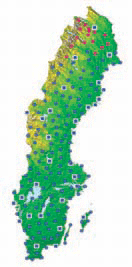
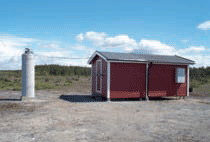
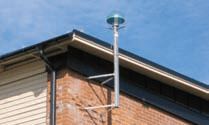
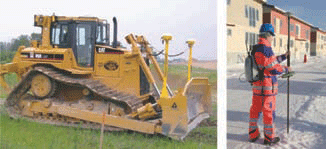
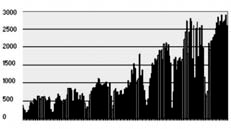
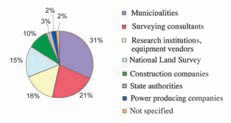












 (No Ratings Yet)
(No Ratings Yet)





Leave your response!